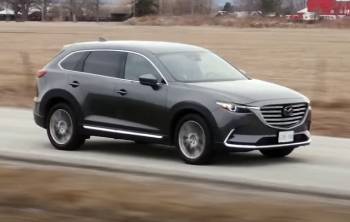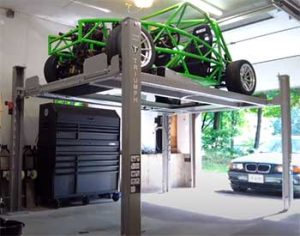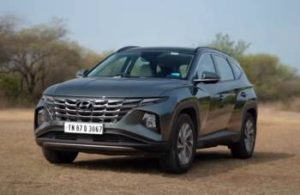Alright, folks! Strap in because we’re about to break down everything you need to know about two of the most popular SUVs out there: the Honda CR-V and the Mazda CX-9. If you’re having a tough time picking between these two vehicles, you’ve come to the right place.
We’ll dive into the pros, cons, and all the nitty-gritty details to help you make an informed decision.
A Brief Comparison Table
| Feature Category | Honda CR-V | Mazda CX-9 |
| Vehicle Type | Compact SUV | Midsize SUV |
| Base Engine | 1.5L Turbo 4-cylinder | 2.5L Turbo 4-cylinder |
| Horsepower | Around 190 hp | Around 250 hp |
| Fuel Efficiency | Excellent | Average |
| Interior Space | Spacious cargo, less roomy for passengers | Roomy for passengers, less cargo space |
| Interior Design | Functional and practical | Luxurious and high-quality |
| Safety Features | Honda Sensing | i-Activsense |
| Infotainment | Simple and easy-to-use | Feature-rich and intuitive |
Overview: Getting to Know the Contenders

Before we get into the meat and potatoes, let’s briefly introduce our competitors. The Honda CR-V is the versatile, reliable pick that has been a cornerstone of the compact SUV market.
On the other side, we have the Mazda CX-9, a midsize crossover that is designed to combine practicality with luxury.
Pros of the Honda CR-V
- Reliability
The Honda CR-V has a solid track record for reliability. These cars are built to last, and you’re less likely to encounter unexpected repair costs down the line.
- Fuel Efficiency
The CR-V offers an excellent fuel economy that is among the best in its class. A great choice if you’re looking to save at the pump.
- Spacious Interior
You get a generous amount of cargo space, and the rear seats are roomy enough for adults to sit comfortably.
- Safety Features
Honda Sensing, the brand’s suite of safety features, comes standard on most trim levels, offering adaptive cruise control, lane-keeping assist, and more.
Cons of the Honda CR-V
- Base Engine Performance
The base engine is a bit underwhelming in terms of power, especially if you’re planning to do a lot of highway driving.
- Infotainment System
Some users find the infotainment system not as intuitive as they’d like. It has a bit of a learning curve.
Also Read: Differences Between Mobil Delvac 1300 Super And Shell Rotella Oil.
Pros of the Mazda CX-9

- Luxurious Interior
Mazda has elevated the CX-9’s cabin to near-luxury levels. High-quality materials and a sleek design make it a pleasing place to be.
- Sporty Handling
If you enjoy spirited driving, the CX-9 is the SUV for you. Its responsive steering and excellent handling offer a more engaging driving experience.
- Advanced Tech Features
Mazda’s infotainment system is robust, featuring Apple CarPlay and Android Auto standard, along with a range of other tech goodies.
Cons of the Mazda CX-9
- Limited Cargo Space
You won’t get as much cargo space in the CX-9, especially when compared to other midsize SUVs.
- Fuel Economy
While not terrible, the CX-9 lags behind in fuel economy. Expect to spend a bit more at the pump.
- Third-Row Seating
The third-row seats are on the cramped side, making them suitable only for children or short trips.
Your choice will largely depend on what you prioritize. If reliability, fuel efficiency, and safety are your top concerns, the Honda CR-V is a strong contender. On the other hand, if you want a dash of luxury and sportier performance, the Mazda CX-9 has got your back.
Digging Deeper: Key Differences Between Honda CR-V and Mazda CX-9
So you think you’ve got the basics down? Great! Now, let’s delve into the critical differences that set these two SUVs apart from each other.
Size and Space: Compact vs. Midsize
Right off the bat, you’ll notice a significant difference in size between the Honda CR-V and Mazda CX-9. The CR-V is a compact SUV that excels in providing a generous amount of cargo space despite its smaller size. On the flip side, the CX-9 is a midsize SUV offering more passenger space but surprisingly less cargo capacity than you might expect from a vehicle of its size.
Engine Performance: Versatility vs. Sportiness
When it comes to the engine, the Honda CR-V’s base engine isn’t designed to win any races. With a 1.5L turbocharged 4-cylinder engine, it focuses more on fuel efficiency than raw power. If you’re someone who frequently commutes or takes long trips, this could be a significant advantage.
The Mazda CX-9, on the other hand, comes with a 2.5L turbocharged 4-cylinder engine that offers far more horsepower. This vehicle is built for those who enjoy a sportier, more responsive driving experience. Sure, you might have to compromise a bit on fuel efficiency, but the thrill of the drive could very well make it worth it.
Interior Design: Functionality vs. Luxury
Honda’s interior is all about practicality and functionality. Yes, it’s comfortable and spacious, but the brand hasn’t made any significant leaps to make it feel luxurious. It’s a car designed for people who want reliability and utility.
The Mazda CX-9 takes a different route. When you step into the cabin, it feels like you’ve entered a higher-end vehicle. The quality of materials used, the layout of the dashboard, and even the comfort of the seats all scream “luxury.”
Safety Features: Honda Sensing vs. i-Activsense
Both SUVs come packed with safety features, but they go about it a bit differently. Honda CR-V comes equipped with Honda Sensing, a suite that includes adaptive cruise control, lane-keeping assist, and collision mitigation braking. While these features have become fairly standard, they’re a testament to Honda’s commitment to safety.
Mazda’s i-Activsense, on the other hand, is a comparable safety suite but includes a few additional goodies. For instance, you get blind-spot monitoring and rear cross-traffic alert as standard features. So, if safety features rank high on your list, you might lean a bit more toward the CX-9.
Infotainment System: Ease-of-Use vs. Robust Features
Honda’s infotainment system is known to be straightforward but not necessarily feature-rich. You get what you need, but don’t expect a ton of extras.
Mazda’s infotainment system has a more extensive array of features, including a more intuitive menu structure and better integration with smartphones. If tech and connectivity are important to you, then the Mazda CX-9 has a slight edge here.
Also Read: Differences Among Mobil 1, Castrol Edge And Pennzoil Platinum Engine Oil.
FAQs: Your Burning Questions Answered
Yes, the Mazda CX-9 is generally bigger than the Honda Pilot in terms of length and width, making it a larger vehicle overall.
Yes, the Mazda CX-9 has received high reliability ratings, although it doesn’t quite match the near-legendary reliability of Honda.
As of my last update in September 2021, there is no official announcement about the Mazda CX-9 being discontinued. However, the automotive market is ever-changing, so it’s essential to check the latest news.
Yes, the Honda CR-V is generally bigger than the Mazda CX-5, particularly in terms of cargo space and rear seat room.
While the Mazda CX-9 isn’t officially categorized as a luxury vehicle, its high-quality interior and advanced features put it close to the luxury segment.
As of September 2021, there’s no word on a specific replacement for the CX-9. However, Mazda is always evolving its lineup, so stay tuned for future updates.
Conclusion
Alright, let’s sum it up! If you prioritize fuel efficiency, cargo space, and a straightforward, functional interior, the Honda CR-V is for you. But if you’re after a sporty drive, a luxurious interior, and a robust set of tech and safety features, then you should steer toward the Mazda CX-9.
By understanding these key differences, you’ll be in a much better position to make a choice that suits your needs and lifestyle. Happy car shopping!



